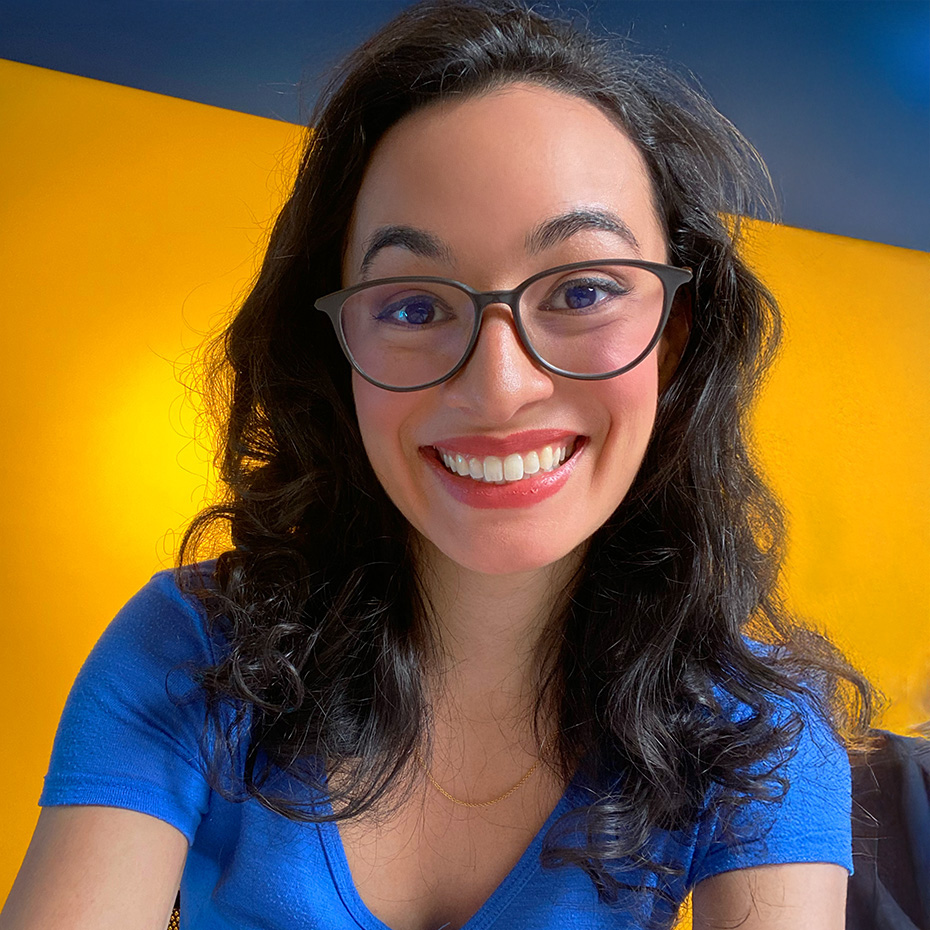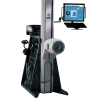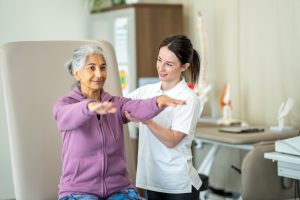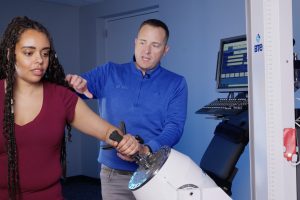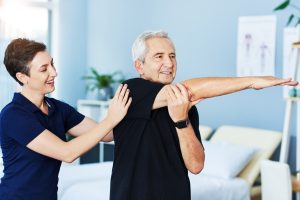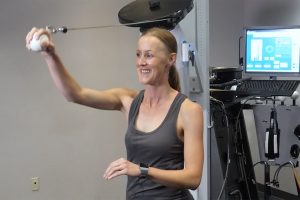
Best Physical Therapy Equipment for Shoulder Recovery
BTE System Guides2025 update. Comprehensive guide to physical therapy equipment for shoulder pain. Home tools vs professional systems, condition-specific recommendations included.
Shoulder pain affects up to 70% of people at some point in their lives, impacting everything from daily routines to job performance.¹ Whether you’re a clinician looking to improve outcomes or a patient navigating recovery, choosing the right physical therapy equipment for shoulder rehab is critical to making meaningful progress. In this guide, you’ll learn about the top equipment options—from basic tools to advanced professional systems—and how to match them to your recovery goals.
Types of Physical Therapy Equipment for Shoulder Rehabilitation
Rehabilitating a shoulder injury requires equipment that supports both early mobility and long-term strength. Depending on your phase of recovery, you’ll likely use a combination of home-based tools and professional-grade machines. Below, we’ll break down what each category offers and when to consider upgrading.
Home-Based Equipment
For patients recovering at home or clinics offering basic rehab, these tools provide a starting point:
- Resistance bands – Ideal for light strengthening and muscle activation exercises; compact and versatile.
- Dumbbells – Great for progressive resistance but limited in their adaptability for isolated movements or patients with restricted mobility.
- Simple pulleys – Effective for improving shoulder elevation and mobility, particularly in early post-operative phases.
If you’re recovering from a shoulder injury, these tools may be enough to get started—but as your rehab advances, you’ll likely need more targeted physical therapy equipment for shoulder-specific treatment.
Professional-Grade Shoulder Physical Therapy Equipment
In a clinical setting, professional rehab tools go far beyond bands and pulleys. They provide greater precision, better patient outcomes, and offer billing advantages for healthcare providers.
- PrimusRS
- BTE’s most versatile rehab system, ideal for any musculoskeletal condition across PT, OT, hand therapy, and sports med.
- Features: Wide array of handles/attachments to simulate job tasks, sports, and ADLs. Tracks strength, ROM, and functional performance with easy-to-read automated reports.
- See real-world revenue and outcome benefits and how it improves engagement.
- Simulator II
- Premier device for evaluating and treating upper extremity MSK conditions.
- Ideal for hand therapy and functional rehab. Offers task simulation and automated reporting for strength, ROM, and functional performance.
- Keiser Functional Trainer (Model 3020)
- Used mainly in gym and fitness settings. Limited lower extremity attachments; lacks progress tracking or task simulation.
- G460 Diagonal Shoulder Abduction Device
- Isolates only shoulder abduction. Very targeted functionality and lacks evaluation features or task simulation.
When to Progress from Home to Professional Equipment
While home-based tools can support initial recovery, certain milestones call for more sophisticated equipment:
- Post-surgical recovery often requires precise, multi-phase progression — explore more in our shoulder replacement rehab guide.
- Complex injuries involving soft tissue, nerve damage, or compensation patterns benefit from advanced diagnostics and targeted strengthening — especially if you’re looking to fix shoulder pain without surgery.
- Professional athletes need kinetic chain simulations, controlled loading, and measurable progress markers.
See How PrimusRS Helps With Advanced Shoulder Rehabilitation
Working our way from isolated strengthening to fully integrated movement, we’ll show you five shoulder exercises on the PrimusRS:
- Protraction/retraction
- Internal rotation
- External rotation
- Standing shoulder extension with retraction and external rotation
- Full throwing simulation
These exercises help clients regain shoulder/scapular strength and function. Common conditions addressed include rotator cuff injuries, labral tears, frozen shoulder, and post-surgical stiffness—whether from overuse at work or sports trauma.
Watch: Treating Shoulder and Scapular Pain with PrimusRS
Shoulder Exercises With the Cable System
The cable system gives you the ability to provide smooth, consistent resistance for functional movements. Whether you are isolating the area of concern, or moving on to incorporate the entire kinetic chain, PrimusRS provokes muscle activation with both concentric and eccentric contractions.
Scapular strength and stabilization are the foundation to healthy shoulder function. These shoulder exercises are a must in any shoulder strengthening program regardless of client population. By using isotonics with the PrimusRS, you support your client’s natural movement patterns, unlike other methodologies like isokinetics.
Shoulder Protraction / Retraction
First, we will focus on building scapular mobility and stability in isolation. We’ll start with a shoulder protraction / retraction. During retraction, we start by looking at the Primus with the arm forward flexed to 90 degrees. We then want to instruct our client to concentrically contract the rhomboids, creating a retraction motion. They will eccentrically resist the motion returning to the start position.
To isolate the serratus anterior with protraction, simply rotate your client so they are facing away from the Primus.
Depending on your client’s needs, you can use several different handles for this exercise. Most people find it easy to start with the wrist strap, then progress to more complex hand positions like the J handles or the spheres.
Shoulder Internal Rotation
Next is a shoulder internal rotation with the shoulder at 90 degrees abduction. This position is very common in sports, jobs, and even some ADLs, making this exercise invaluable for rehab.
For this shoulder exercise, the client is going to concentrically push down (or internally rotate) while the Primus provides resistance. This activates the shoulder internal rotators in isolation so that later, we can build up to a full throwing or multidimensional overhead movement simulation.
You can alternate between different handles, grip styles, and speeds to create specific sports or ADL activities. The wrist strap is a great way to add an extra challenge to this exercise.
Shoulder External Rotation
Now, we will do standing shoulder external rotation at 90 degrees abduction. This is an inherently weak motion for most people, and it’s very difficult to isolate using other methods. The PrimusRS gives you a precise, reliable way to measure and perform this movement.
This shoulder exercise is usually harder than internal rotation. So you’ll want to start with lower resistance and a more stable handle, like a small sphere. This exercise requires the client to eccentrically resist as the Primus pulls the arm back into internal rotation. Now we’re isolating the external rotators such as the teres minor and infraspinatus in both the concentric and eccentric phase.
We usually start out with the J handle, and when the client is ready, you can progress to the wrist strap, and the small or large spherical objects.
Shoulder Extension With Retraction and External Rotation
Progressing through the shoulder exercise series, next we will perform standing shoulder extension with retraction and external rotation. This one is a pretty challenging exercise. It addresses strength, stability, and mobility in the scapula and shoulder in one continuous movement pattern. Doing this exercise on the PrimusRS allows you to provide constant eccentric resistance through each point in motion.
With this exercise on the cable system, we’re creating a protraction of the scapula first. Then the client will retract until the shoulder is in a neutral position. From there, they’ll perform a shoulder extension until the elbow is at 90 degrees flexion. Lastly, they’ll begin the external rotation and they’ll be challenged to maintain the stable scapular position.
This is a dynamic and compound shoulder exercise, and it’s really beneficial for a wide variety of clients including industrial workers, paramedics, nurses, and athletes.
Controlled Throwing Simulation
Finally, we can do a simulated throwing motion with a sphere. This exercise is obviously great for athletes who need to train through the full throwing motion. But it is also very powerful for clients like firefighters, construction, healthcare workers and others doing multi-dimensional overhead movements.
The client will be engaging their entire upper body, their lower extremity and core, just like in a live sports throw. Once you’ve progressed from the isolated strengthening to this fully functional simulation, you can address any biomechanical improvements the client may need.
Why Professional Equipment Outperforms Basic Tools in Clinics
Professional rehab equipment offers key advantages over basic tools like resistance bands or free weights, making it essential for effective and efficient patient care.
Precise Resistance Control
Unlike elastic bands, advanced machines provide exact, adjustable resistance. This precision lets therapists tailor exercise intensity with confidence, ensuring safe and measurable progress.
Eccentric Training Capability
These machines control both concentric (muscle shortening) and eccentric (muscle lengthening) phases, allowing therapists to isolate and customize resistance for each. This targeted approach helps rebuild strength and reduce injury risk.
Functional Movement Patterns
Professional equipment supports full-body, real-world movements by engaging multiple muscle groups together. Patients can safely practice tasks like lifting or stepping with adjustable assistance, preparing them better for daily activities.
Clinical Documentation
Automated data tracking records resistance, reps, and progress, simplifying billing and outcome reporting. This measurable documentation supports reimbursement of higher-level billing codes and shows clear patient improvements.
ROI for Practices
Investing in professional equipment enhances billing accuracy, boosts patient retention, and attracts referrals. Clinics benefit from improved outcomes and operational efficiency, driving long-term growth.
Choose Equipment That Delivers Measurable Recovery Results
The shoulder is a complex yet commonly injured joint. With the BTE PrimusRS there are countless ways to address the isolation of each motion before safely progressing to these major integrated functions.
The five shoulder exercises we showed you today on the PrimusRS can help your client regain scapular and shoulder strength and function. You can add variety by using different attachments or working from seated and standing positions. Changing heights and angles opens up countless possibilities for creative simulation.
If you have a certain condition or tool you want to learn more about on the PrimusRS, let us know! Subscribe to TherapySpark for the latest rehab techniques.
Colleen Isaiah
TherapySpark Editor
BTE
